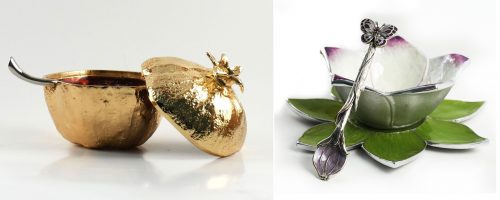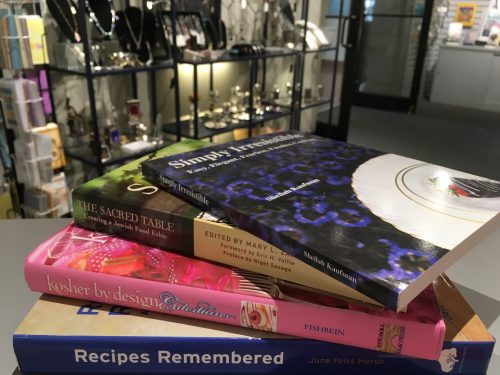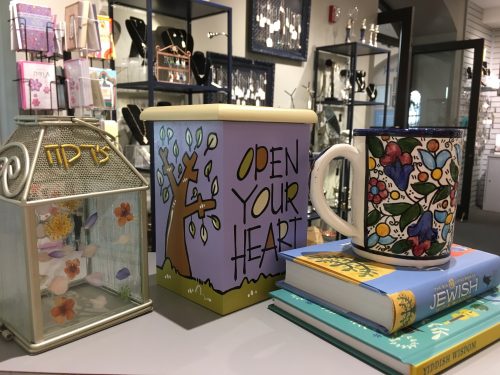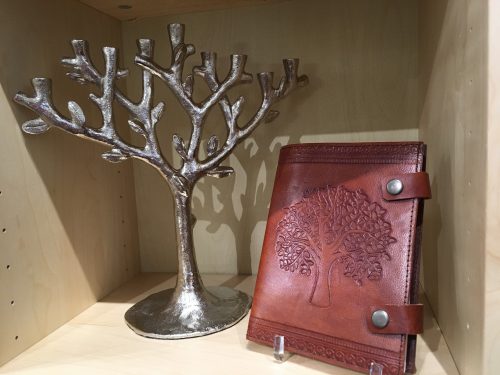A Year of Jewish Learning

A Tu B’Shvat-inspired Reflection
A blog post by JMM Office Manager and Shop Assistant Jessica Konigsberg. For more posts from Jessica, click HERE.
Almost exactly one year ago, I began work at the Jewish Museum of Maryland, helping to run the Gift Shop and support the hardworking Board of Trustees—as well as support visitor services, admin, and other Museum functions as needed. My first merchandising display and my first blog assignment celebrated Tu B’Shvat, the Jewish New Year for Trees. Tu B’Shvat marked for me not only the beginning of a new job, but a new world of learning about Jewish religion and culture.
The past year saw me attend my first service (Rosh Hashanah at my husband’s family’s synagogue in Fairfax, Virginia), purchase a mezuzah (a Hanukkah gift for my husband), upgrade from a homemade paper Seder plate to a real one, and discover my own family connection to the B’nai Israel Synagogue building. The year began with a simple display and blog post about Tu B’Shvat and ended with a lovely comment from my husband on Hanukkah: his favorite thing about me working at the Jewish Museum of Maryland is that we now share something new. I also had countless wonderful conversations with JMM visitors who taught (and continue to teach) me new things every day.
I think my own internal JMM calendar will always begin with Tu B’Shvat—the beginning of my first Jewish year of learning. Using Tu B’Shvat to mark time is quite appropriate since the holiday, which falls on the 15th of the month Shevat, marks the opening of a new fruit-bearing cycle for trees in Israel. Tu B’Shvat celebrates both the literal tree and its fruit, and the tree as a metaphor for humanity.
This month, in the lead up to Tu B’Shvat on January 20, Esther’s Place Shop will mark the holiday with displays celebrating the natural world and humanity’s connections to it. Since Tu B’Shvat 2019 marks the beginning of my second year at JMM, I tried to approach the holiday in a broader and deeper way by researching the Tu B’Shvat Seder, which typically involves consuming fruit and nuts in honor of the holiday’s lessons and discussing the connections between agriculture, seasonal change, and the human experience.
Last year, our display emphasized trees, but this year, in addition to featuring our beautiful Tree of Life products, I hope to think more broadly about the meaning of Tu B’Shvat and the metaphors of trees, fruits, and seasonal change in our lives. After reading a number of Tu B’Shvat Seder suggestions, I was inspired to think about Esther’s Place products that explore growth, productivity, possibilities, protection for the world we inhabit, and mystery and the pursuit of new knowledge.




